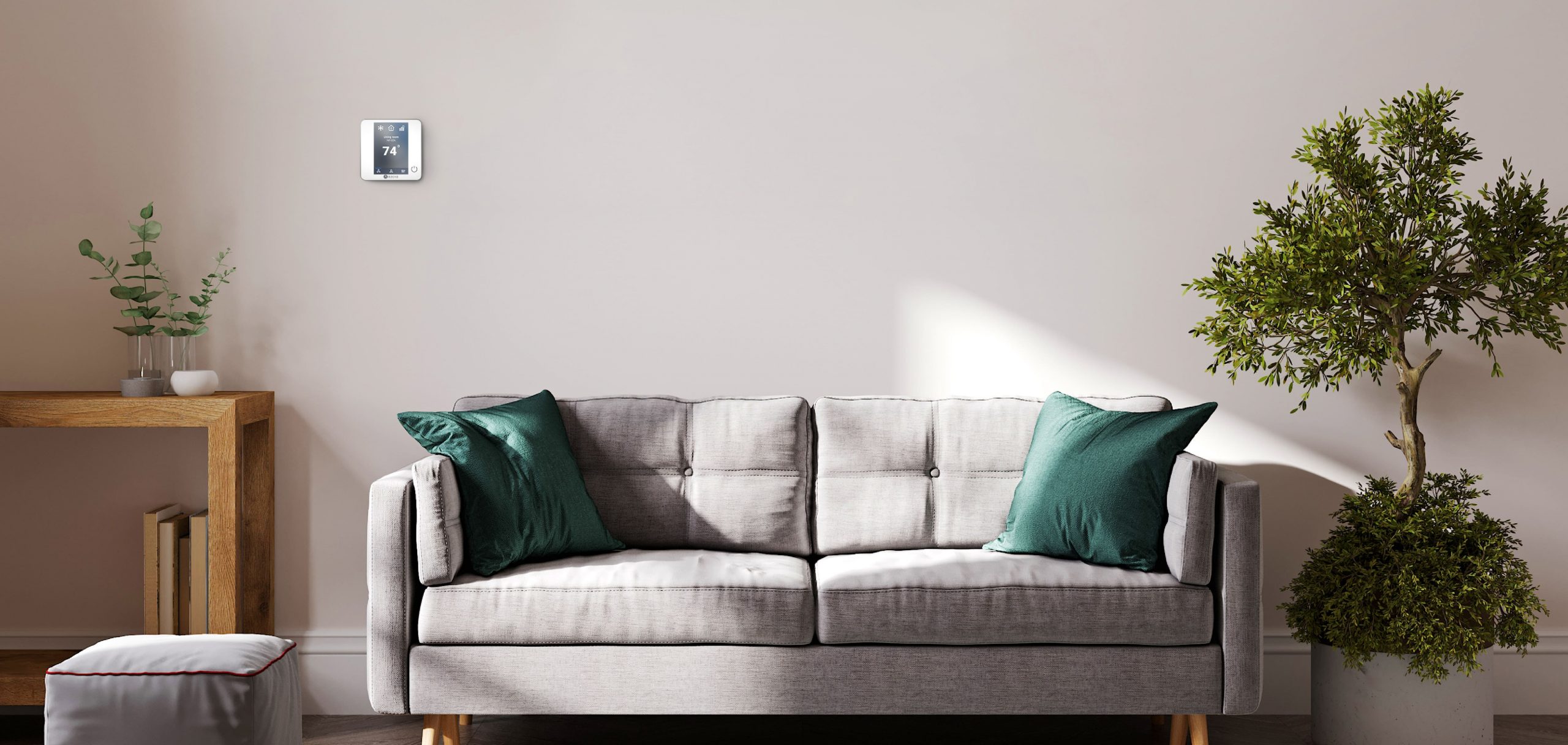


17 Feb 25

What Is the Normal Room Temperature? Tips for Each Season
Room temperature isn't just a number—it's a key factor in our comfort and productivity, and it even impacts energy usage. But what does "normal room temperature" mean, and how can you maintain it throughout the year? In this guide, we'll explore the factors that influence room temperature, the ideal ranges for various settings, and the best solutions for keeping your spaces comfortable and efficient.
Factors Influencing Room Temperature
Standard room temperature typically falls within a comfortable range, but it can vary widely depending on several environmental and structural factors. Understanding these factors can help you maintain optimal comfort and energy efficiency in your space.
External Weather Conditions
The climate outside is one of the biggest influences on indoor temperature. In warmer regions, maintaining a cool interior requires robust cooling solutions, while colder climates demand reliable heating systems. Seasonal shifts also require adjustments to indoor temperature settings to ensure comfort year-round.
Insulation and Building Materials
The materials used in your home or office significantly impact how well the indoor temperature is regulated. Proper insulation helps retain heat during winter and keeps cool air inside during summer. Conversely, poor insulation or heat-conductive materials, like single-pane windows, can cause significant energy loss, making it harder to maintain a consistent temperature.
Ventilation and Airflow
Good ventilation ensures even temperature distribution across a room. Poorly ventilated spaces often have hot or cold spots, creating discomfort. Proper placement of vents, fans, and air purifiers can help improve airflow and maintain a balanced environment.
Humidity Levels
Humidity plays a significant role in how we perceive temperature. High humidity makes a room feel warmer than it is, while low humidity can make it feel colder. Maintaining a humidity level of 40% to 60% is ideal for most spaces, balancing comfort and energy efficiency.
Internal Heat Sources
Appliances, lighting, and even the number of occupants in a room contribute to heat generation. Kitchens, for example, often feel warmer due to cooking appliances. In smaller spaces, these factors can cause noticeable temperature increases.
Thermostat Placement
Where your thermostat is installed has a direct impact on temperature regulation. A thermostat placed in direct sunlight might overestimate the room's warmth, causing overcooling. Similarly, a thermostat in a shaded or drafty area might lead to unnecessary heating. Wireless thermostats, which can be moved, or smart thermostats with multiple sensors, offer more accurate temperature control.
Ideal Indoor Temperature
The ideal room temperature depends on the purpose of the space and the activities conducted there. Here’s a breakdown of what works best:
At Home
- For living areas, the average room temperature that most people find comfortable is around 20°C to 22°C (68°F to 72°F). During summer, setting it slightly higher at 24°C (75°F) can help save energy.
- Bedrooms: For optimal sleep quality, a cooler setting around 18°C (64°F) is recommended, as it promotes better rest and relaxation.
In the Office
Work environments are best kept at 21°C to 23°C (70°F to 73°F) to ensure productivity and comfort. Temperature fluctuations can lead to discomfort, affecting employee focus and efficiency. Consistent climate control is essential in these settings.
Solutions for Maintaining Normal Room Temperatures
Maintaining a consistent and comfortable room temperature is easier than ever with modern technology and smart strategies. Here are some effective solutions:
Solution 1: Smart AC Controllers
Smart AC controllers offer a high-tech way to regulate room temperature efficiently. Devices like the Aidoo Pro by Airzone are particularly advanced, providing a range of features that make them indispensable:
- Precise Temperature Control: Maintain the exact temperature you desire, with options for different zones.
- Scheduling and Scene Creation: Automate cooling and heating based on your daily routine or specific scenarios, such as bedtime or working hours.
- Energy Monitoring: Keep track of energy consumption and make adjustments to reduce costs.
- Remote Access: Control your AC from anywhere using a smartphone, ensuring comfort even before you get home.
The Aidoo Pro is compatible with over 200 brands and thousands of models, making it a versatile solution for almost any setup.
Solution 2: Wireless Thermostats
Wireless thermostats allow you to measure and control temperature from the most relevant areas of a room. This flexibility ensures more accurate readings and better comfort levels.
- Custom Placement: Position the thermostat where it best represents the room’s average temperature.
- Smart Integrations: Pair with smart home systems for enhanced control and convenience.
- Temperature Zoning: Use wireless thermostats with smart controllers like the Aidoo Pro to regulate different areas of a home or office independently.
Solution 3: Improve Insulation
Enhancing insulation is a long-term investment in maintaining stable indoor temperatures. Key upgrades include:
- Installing double-glazed windows to reduce heat transfer.
- Adding insulation to walls, roofs, and floors.
- Sealing gaps and cracks around doors and windows to prevent drafts.
Solution 4: Use Humidity Control Devices
Humidity levels directly affect how warm or cool a room feels. Balancing humidity with dehumidifiers in summer and humidifiers in winter helps maintain a comfortable atmosphere without over-reliance on heating or cooling systems.
Solution 5: Optimize Ventilation and Airflow
Proper airflow ensures even temperature distribution and reduces hot or cold spots in a room. Ceiling fans, strategically placed vents, and air purifiers can improve ventilation and help maintain consistent temperatures.
By considering factors like thermostat placement, insulation, and advanced solutions like smart AC controllers and wireless thermostats, you can achieve and maintain the normal room temperature that suits your space. With tools like the Aidoo Pro, you can combine comfort, energy efficiency, and modern convenience for an upgraded living or working environment. Let your thermostat work smarter, not harder, to create the perfect climate year-round.